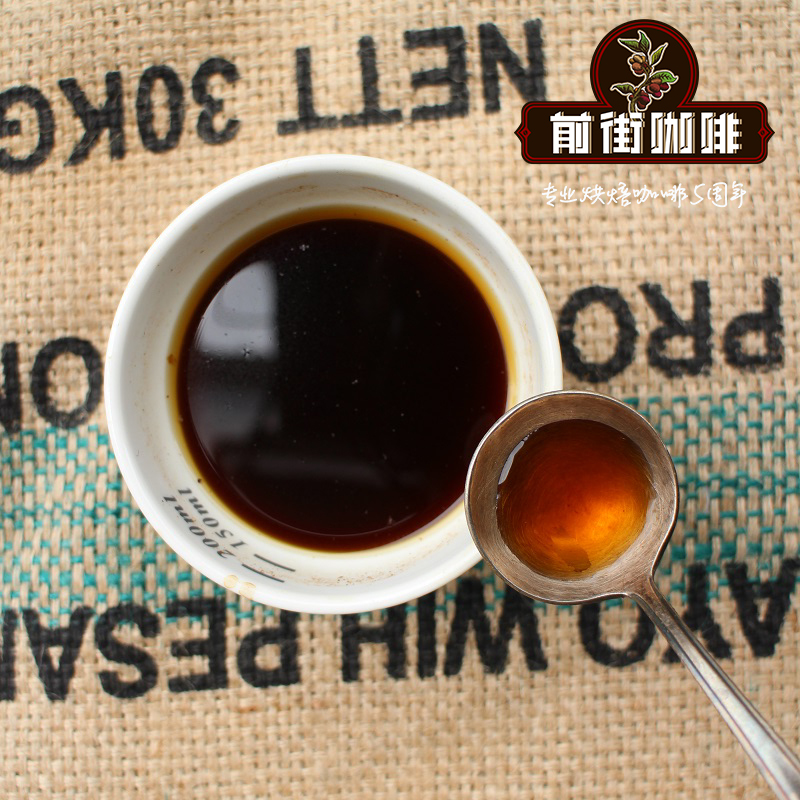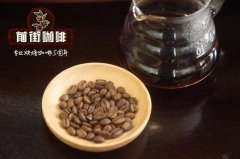What is Rose Summer do you know? Chaka Manor Rose Summer Coffee introduction

Professional coffee knowledge exchange more coffee bean information please follow the coffee workshop (Wechat official account cafe_style)
Introduction of Qianjie Coffee-Rosa Coffee
The species of Geisha was first discovered in the rose forests of Ethiopia in 1931 and later sent to the Coffee Institute in Kenya. Introduced to Uganda and Tanzania in 1936 and introduced to Costa Rica in 1953.
Not many people have paid attention to Rose Summer all the time. Until one day, Don Pachi was originally brought to Costa Rica from GESHA, a small town in southwestern Ethiopia, and then Rosa entered Panama along the southern route. Esmeralda Esmerada Manor in Panama separated it from other varieties and won the national coffee competition, so Rosa officially entered everyone's attention.
As early as 1904, at the beginning of the construction of the Panama Canal, a large number of European engineers and senior managers were hired to work in Panama City, which is very hot in the east. After the completion of the Panama Canal in 1917, this group of senior intellectuals, especially Nordic, fell in love with Bouquete of Panama, where the climate is cool and spring all year round, and many people stay here, buy farms, retire and enjoy the fragrant living conditions of Danxia.
At present, the best-known origin of Rosa Rosa is in the Pokuit region of Panama, a small city at the eastern foot of Mount Baru. In Poquet, the most famous rosy summer coffee plantations are the famous Emerald Manor (La Esmeralda), Arida Manor Elida Estate, Panama NPGE Manor.
In 2007, documentary director Adam Overton and photographer wife Rachel Samuel came into contact with the Gera Coffee Forest in the Bench-Maji region of Ethiopia while filming a documentary about Ethiopian coffee for the Ethiopian government. In the process, they were not only reacquainted with the great land of Ethiopia, but also came up with the idea of setting up their own coffee estate and brand.
In 2009, they were lucky enough to meet the famous mule owner, BOP judge Willem Boot, and Willem Boot's idea provided an opportunity for the Overton couple to return to Ethiopia to find the birthplace of Rosa Xia.
Finally they came to Banchi Magi, an area in southwestern Ethiopia near South Sudan, where many places are known as the village of Gesha and where primitive roses are most likely to be found. When we arrived in 2011, there was nothing in the manor.
Adam followed Willem Boot on an expedition in the forest around the manor, where he discovered a variety of wild tree species in a jungle magically surrounded by a dense forest. Later they learned that this was the place where the rose species were first found in the Gori Gesha forest. So they collected seeds from native rose trees, screened them, and planted them in Rosa Village. They decided to build the estate here and name it Gesha Village Coffee Estate, a 475-hectare coffee farm about 12 miles from the Gori Gesha Forest.
Ruoxia Village, with a total area of 475 hectares, has gradually expanded its planting area from 2011 to 2017, with a planting area of about 320 hectares.
Later, Willem Boot came to Rosa Manor as their technical adviser, and they found a sample very similar to the native species of Rosa being planted at the mule manor in a primeval forest near the estate known as Gori Gesha.
Both Overton and Willem Boot believe they have found the origin of Rosa Rosa, and later breeding and planting work have gradually confirmed this conjecture.
In the 2017 Japanese barista contest, Takayuki Ishitani Ishitani used beans from Yoshimura to win the championship, not to mention the excellent performance of raw beans in the bidding cups.
There are two main treatments for the production of raw beans in Ruoxia Village:
At the same time, Ruoxia Village is also testing a variety of treatments, such as dry fermentation and wet fermentation, a variety of honey treatment and so on. Among the many coffees, the aroma of flowers and the strong sweetness of tropical fruits are the consistent characteristics of Geisha.
END
Important Notice :
前街咖啡 FrontStreet Coffee has moved to new addredd:
FrontStreet Coffee Address: 315,Donghua East Road,GuangZhou
Tel:020 38364473
- Prev

A brief introduction to the grading of Rose Summer Coffee beans in Jadeite Manor what is the difference between Rose Summer Red Standard, Green Standard and Blue Standard
Professional coffee knowledge exchange more coffee bean information please follow Coffee Workshop (Wechat official account cafe_style) Front Street Coffee-Jade Manor Rose Summer introduction Jadeite Manor (HaciendaLaEsmeralda) the land is owned by Swedish Hans Elliot (HansEl)
- Next

What is the flavor of Costa Rican Rose Summer Coffee? introduction to Costa Rica Milasu Rose Summer
Professional coffee knowledge exchange more coffee bean information please follow the coffee workshop (Wechat official account cafe_style) Front Street Coffee-Costa Rica Milasurosia introduction Costa Rica has a long history of growing coffee, known as one of the best coffee producers in the world, in recent years, due to the rise of boutique coffee, local coffee sales have increased again, such as Tarazu and Sanshui
Related
- Beginners will see the "Coffee pull flower" guide!
- What is the difference between ice blog purified milk and ordinary milk coffee?
- Why is the Philippines the largest producer of crops in Liberia?
- For coffee extraction, should the fine powder be retained?
- How does extracted espresso fill pressed powder? How much strength does it take to press the powder?
- How to make jasmine cold extract coffee? Is the jasmine + latte good?
- Will this little toy really make the coffee taste better? How does Lily Drip affect coffee extraction?
- Will the action of slapping the filter cup also affect coffee extraction?
- What's the difference between powder-to-water ratio and powder-to-liquid ratio?
- What is the Ethiopian local species? What does it have to do with Heirloom native species?

